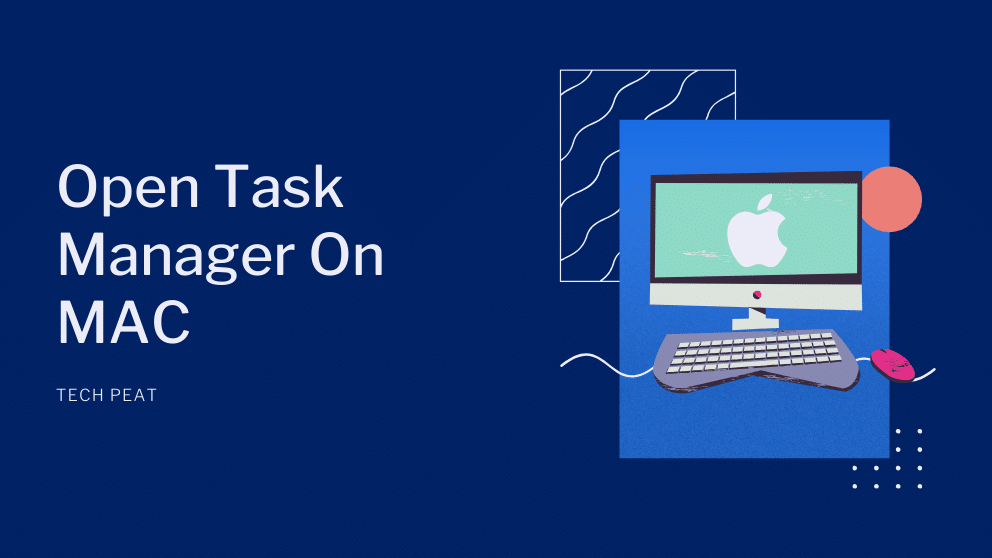Contents
How do I open the task manager on Mac?
Not thoroughly modern operating systems. Often programs crash in the unforeseen processes are suspended and consume valuable computing resources, and bugs are causing files to get lost or corrupted.
Task Managers are useful software that allows you to track what is happening on your computer and to shut down malfunctions and the operation of a file system for reading and writing sensitive data events.
Much like the Mac Task Manager for Windows, which is called Task Manager Mac, macOS also provides an application with details about program and device output that lets users interrupt processes when they begin to mismanage.
The article discusses what it can do and provides three alternative Mac task managers for users who want to look at other solutions. The article introduces a task manager in the OS.
The Task Manager for Mac is Activity Monitor:
You’ll find Activity Control, the Official Task Manager for Mac Computers, in the Applications folder on your Laptop.
The Activity Monitor can be daunting for the first time as the program simultaneously shows a variety of information. But if you understand what Activity Monitor does and how to keep your Device running like an oiled machine, the initial respect for its utility can soon be replaced.
The Activity Monitor mac shortcut window contains several tabs: CPU, memory, energy, disk, network, and cache. You can see how processes impact your Mac machine with these keys.
CPU :
The percentage of the CPU power used by clicking on these buttons sorts the running processes.
Furthermore, at the bottom of the Task Monitor window, the proportions of the resources used by Device and user processes are shown.
A CPU charging graph is right next to the actual rate of the CPU capacity in the system and user processes, indicating the interest of the CPU capacity that all system and user processes use.
MEMORY :
Clicking on this button will determine how much memory every process requires.
The Memory Stress Chart displays the memory resource availability at the bottom of the Activity Monitor window. By clicking on View and Update Rate, you can adjust the number of graph changes.
The diagram is green when there are enough memory resources, yellow when memory resources continue to be available, and red when memory resources are exhausted.
ENERGY :
The use of energy in running processes by clicking on this button. The Energy Impact Chart is displayed at the bottom of the Activity Monitor display.
The energy effect is a proportional indicator of an application’s actual energy use, and the graph shows how much energy all applications consume.
The real battery charge level, which changes color from blue to green when the device is operated from a power adapter, is also shown at the bottom of the Activity Monitor window.
DISK :
If you click on that button, you sort the running processes by the amount of data you read from and write to your drive.
After pressing the button Screen, the bottom of the task window will display a graph displaying all processes with full disk operation.
The diagram includes two lines: blue and red. The blue line indicates the number of readings per second or the number of data reads per second.
The red line displays the number of readings per second or the sum of readings entered per second.
NETWORK :
If you click on this button, you can send or receive the data through your system.
After pressing the Network button, a graph displaying all network activity in all applications is shown in the Activity Monitor window.
The figure is two lines: one shows either the number of packets received per second and the other shows the number of packages sent per second or the amount of data transmitted per second.
CACHE :
The button Cache only shows how much Cached Contents local networking devices uploaded or downloaded.
It is only available in macOS Higher Sierra 10.13,4 or later.
After pressing the cache, a map that displays the total caching behavior over time appears at the bottom of the Behavior Window.
How can Mac Task Manager be used?
To start a procedure, pick the process you wish to stop from the main application window and click on the stop button in the top-left corner of the window to use Mac Task Manager, Activity Monitor.
How do you open the task manager on a MacBook?
You might feel weird with the new platform and features when you switch from Windows OS to Apple’s Mac OS X. Changing settings on this new operating system still feels alien.
One of the most significant learning curves to migrate from Windows to a new Mac is how to complete a job using Windows Task Manager’s Mac equivalent.
In Windows OS, opening Task Manager and selecting “End Process” will stop a running process.
How to open the task manager in the MAC book?
It’s easy to run the Windows Task Manager. Merely using the Ctrl + Alt + Del keyboard shortcut, Ctrl + Shift + Escape, or press the “Start Task Manager” button on the bar of a menu.
Running Activity Monitor functions somewhat differently in Mac OS X.
By opening Finder, you can open Activity Monitor, go to Applications > Utilities and then pick the program “Activity Monitor.”
There is another way you can quickly access the software “Activity Monitor.”
To start the search field, press Command + Space key.
Enter and click on “In” or “Back” in the search area.
An active Task Manager is the Activity Monitor since it not only displays applications running at user niveau but also displays applications running at the system, kernel, and some other processes.
You can not locate it with the Activity Monitor (Mac Task Manager or Mac Task Manager), without losing any job while a program is running on your Mac machine.
You can sort processes using your ID, name, and memory. You may also scan for a specific process that matches characters or names.
In the case of non-responsiveness, the activity control program can also be used to compel apps from Mac. To do that, select the application from the activity monitor list that you wish to force to close, click (X) on the left top corner, and select “Force Quit.”
You may also use Force Quit Applications to close any unresponsive programs by clicking on the key combination. Then pick the plan to close and press “Force Quit.”
BEST ALTERNATIVES OF TASK MANAGER :
As the official Mac machine task manager, the Activity Monitor is carefully incorporated in MacOS, with all the necessary functions for managing tasks.
Given its first-class status, a few Mac OS work managers are worth installing on your computer when it doesn’t suffice to do what you want to do.
iStat Menus
The iStat menu is an advanced Mac task manager with CPU, network, disk/battery, weather, other alerts, and hotkey support, rearranging menus, and a lightweight GUI for notification centers, and much more.
We love how the iStat menu can reside in the menubar and display essential details on an eye.
BitBar
BitBar is a highly flexible menu bar addon that displays all types of useful information, including battery health; Processor temperature, CPU load; CPU uses; power status, etc.
BitBar also supports plugins, and many developers already contributed to the BitBar plugin repository by an impressive number of plugins.
You can develop your BitBar plugin and submit it to the BitBar official website with other plugins if you have the know-how to contribute.
XRG
XRG is a macOS framework open-source display. As is the case with Activity Monitor, XRG enables you to monitor the CPU’s activities, the use of memory, and battery status.
XRG also allows stock market results, current weather, and other information to be displayed. It is lightweight, easy to use, and functions with all the new macOS models.
CONCLUSION :
Many new Mac users come from the Windows world where they would have access to the Task Manager to avoid errors and tasks.
The Mac has its Task Manager, but it has a task log with a different name.
The Active Monitor operates in a somewhat similar manner to how Task Manager works in Windows, which allows you to quickly access, control, and end tasks on Mac, applications, and any active processes that are running on Mac OS X.
If you’re not familiar with Activity Monitor or Mac task management, as a rule, don’t worry.
FAQS :
How do you open the task manager on a MAC?
- To get the search area, click Command+Spacebar.
- Start to type “ACTIVITY MONITOR.“
- Once it arrives, click the Activity Monitor.
How do I, an Open task manager?
- Click on the Task Manager options, press Ctrl+Alt+ Delete.
- Tap on Ctrl + Shift + Esc.
- Enter Run and type in the task mgr. Click the Start button.
- Right-click the taskbar and pick the choice for Task Manager.
What is the equivalent of the task manager on MAC?
The Activity Monitor functionality is similar to the Windows Task Manager on a Mac.
The default Apple application is Activity Monitor, which can be easily found in Launchpad.
What is the Control + ALT + Delete function on MAC?
Nevertheless, as opposed to PCs, macOS does not use the usual Force Quit frozen program Ctrl+Alt+Delete key combination.
Follow these quick steps if an application hangs up on your new Mac.
To open the Force Quit Applications window, press Command+Option+Esc on a keyboard.

Blogger, WordPress, JavaScript, software leadership, software development, and related technologies. Love to write blogs and Articles and Passionate About sharing Knowledge.

